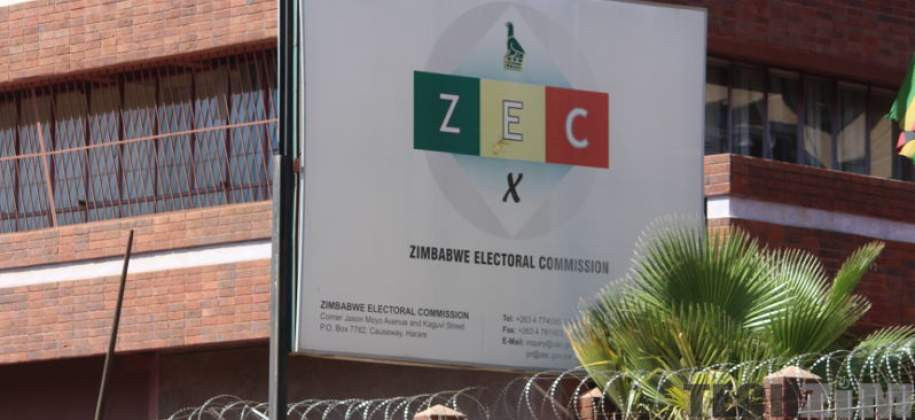
ZIMBABWE, endowed with vast natural resources and a strategic location in Southern Africa, has long been seen as a potential hub for economic growth and development.
However, attracting Foreign Direct Investment (FDI), servicing National debt, and improving the perception of Zimbabwe as a preferred Investment destination continues to present significant challenges.
While the country has seen pockets of investment in sectors like mining and manufacturing, the overall levels of FDI have been inconsistent and far below its potential.
Zimbabwe is at a pivotal point in its economic history, demonstrating resilience amidst challenges, such as high inflation and exchange rate instability.
The country is now in a position to make decisions that could shape its economic future for decades ahead.
By addressing and implementing crucial policies, Zimbabwe has the opportunity to enact structural reforms that will improve the business environment and leverage its abundant natural resources to help alleviate the debt pressures currently crippling the economy, incentivise investment, and stimulate economic growth.
Recent research suggests that reforms aimed at improving the business environment could be the catalyst needed to attract significant FDI, thereby spurring economic growth and increasing the country’s ability to settle debt obligations.
This article explores how strategic policy changes could unlock Zimbabwe's economic potential and create a more conducive environment for FDI and economic growth.
- Zimbabwe is closed for business, says think tank
- New perspectives: Reconfigure Zimbabwe’s economy for recovery
- Zimbabwe is closed for business, says think tank
- New perspectives: Reconfigure Zimbabwe’s economy for recovery
Keep Reading
Zimbabwe’s economy
Zimbabwe's economy has shown a surprising degree of resilience. Since 2021, the nation has experienced steady growth despite a backdrop of high inflation and exchange rate instability.
In response to these challenges, the Reserve Bank of Zimbabwe (RBZ) introduced a new currency, the Zimbabwe Gold (ZiG), in April 2024 to restore confidence in the nation’s monetary policy.
Since its introduction, the ZIG has remained relatively stable against the United States dollar, suggesting a potential path toward financial stabilisation.
The real GDP growth rate in 2023 was estimated at 5%, a slight decline from 6,1% in 2022, primarily driven by the agriculture, mining, and services sectors.
However, a significant slowdown is projected for 2024, with growth expected to drop to just 2%. This anticipated decline is largely due to the predicted lower agricultural output, a consequence of the El Niño-induced drought that has impacted the region.
Zimbabwe faces high public debt representing 96,7% of GDP (US$ 21,2 billion) in 2023. The immense debt burden is hindering economic progress and limiting access to external development assistance critical for growth.
To attract FDI, and boost economic growth and infrastructural development, immediate debt restructuring, and arrears clearance are vital.
Achieving this will require strong government support, international cooperation, and a commitment to fiscal discipline and economic reforms.
The key to sustainable growth
Foreign Direct Investment is crucial for economic growth, especially in developing countries. It brings much-needed capital, technology, and management expertise, which can enhance productivity, create jobs, and stimulate economic development.
For Zimbabwe, which has faced economic challenges such as high inflation, and utility challenges, attracting FDI could provide a pathway to more sustainable and inclusive growth.
In recent years, countries that have managed to attract substantial FDI flows have often done so by creating a favourable business environment.
Zimbabwe, with its rich mineral deposits, skilled workforce, and growing market, has many of the raw ingredients needed to attract investors.
However, the country needs to address key bottlenecks in its business environment to fully realise its potential. To achieve meaningful economic transformation, Zimbabwe may focus on several key areas:
Simplify trade policies: Streamlining the processes for importing and exporting goods thereby reducing costs and administrative burdens, making Zimbabwe more attractive to foreign businesses.
Strengthen and enhance governance: Improving the efficiency and reliability of the institutional frameworks would provide investors with greater security, encouraging long-term investments and efficiencies in government processes. Strengthening institutions and ensuring transparency in public financial management will be key to achieving these goals.
Improve regulatory transparency: Transparent policymaking and reliability of the legal framework are critical for reducing perceived risks and building investor confidence.
Invest in infrastructure: Developing key infrastructure, such as transportation and energy networks, and ICT systems, would support economic activities and make Zimbabwe a more attractive investment destination. These are essential for boosting productivity and supporting economic diversification.
Debt management: Effective management of public debt is crucial to ensuring that borrowed funds are used efficiently and do not exacerbate the debt burden. This includes adopting stringent fiscal policies and exploring various financing mechanisms, such as public-private partnerships (PPPs), to mobilize resources for key projects.
Leveraging natural resources: Zimbabwe is rich in natural resources, including minerals such as platinum, lithium, and gold.
The mining sector, which contributes significantly to the country’s GDP, presents a substantial opportunity for economic growth if managed sustainably.
Ensuring that the benefits of resource extraction are equitably distributed and reinvested into the economy is vital for long-term development.
Development resource mobilisation
The country's challenges highlight the need for a reformed global financial system that better supports developing nations in managing debt and accessing development finance.
A more equitable system would provide these countries with greater access to concessional financing, debt relief, and technical assistance, allowing for sustainable development without being burdened by debt.
Achieving this requires coordinated efforts from international financial institutions and the global community. One of Zimbabwe’s major challenges is the mobilising of financial resources for development.
According to the African Development Bank (AfDB), Zimbabwe has an annual financing gap equivalent to 13,4% of GDP (US$ 3,7 billion) to achieve its desired structural transformation by 2030.
Closing this gap will require a multifaceted approach, including enhancing domestic resource mobilisation, increasing tax revenues while being sensitive to tax rates, and attracting more FDI.
Charting a new path forward
Zimbabwe has a unique opportunity to attract significant FDI by reforming its business environment. Such investments would not only provide an influx of capital but also bring in new technologies and expertise that could drive economic development across various sectors.
In the competitive global landscape, countries must continuously strive to improve their attractiveness to investors. By focusing on key reforms Zimbabwe can position itself as a leading destination for FDI in Africa.
Zimbabwe’s economic challenges are significant, but they are not insurmountable. The country possesses immense potential for growth and development, thanks to its rich natural resources, strategic location, and resilient population.
However, unlocking this potential will require bold actions and reforms, particularly in managing debt, fostering policy transformation, and enhancing governance and transparency.
The time for action is now, and the decisions made today will shape the country’s trajectory for decades to come. With these reforms, Zimbabwe can unlock its full economic potential and embark on a new chapter of sustainable growth and development.
Allana is a financial and economic analyst, a board director and doctoral student.











